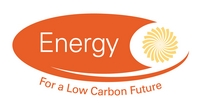Building Supply Chain for Mass Refurbishment of Houses: Mass Implementation -Whole house solutions report (WP3 D3)
Abstract:
This project looked at designing a supply chain solution to improve the energy efficiency of the vast majority of the 26 million UK homes which will still be in use by 2050.It looked to identify ways in which the refurbishment and retrofitting of existing residential properties can be accelerated by industrialising the processes of design, supply and implementation, while stimulating demand from householders by exploiting additional opportunities that come with extensive building refurbishment.The project developed a top-to-bottom process, using a method of analysing the most cost-effective package of measures suitable for a particular property, through to how these will be installed with the minimum disruption to the householder. This includes identifying the skills required of the people on the ground as well as the optimum material distribution networks to supply them with exactly what is required and when.
Work Package 3 covers developing retrofit solutions to improve thermal performance of our national housing stock.
This deliverable is number 3b of 7 in Work Package 3. It builds on the research carried out for the Technical Solutions Matrix (D3.3a). Using the Evaluation Matrices developed previously as a decision guide, this report tackles the challenge of developing generic whole house solutions for a set of representative house types. A preliminary analysis of the impact of the defined retrofit interventions is included in this deliverable.
Due to the range of house types available, we have selected four types that are distinctly different from each other in order to work through the range of unique constraints posed by each type. The four types are as follows:
- Three bed semi detached house
- Mid-rise block of flats
- High-rise tower block
- Hard to Treat property
- Existing condition - what might you find in a property of this type?
- Issues and Risks - what are the challenges and unknowns?
- Improvement Options - what can you do to make the property more thermally efficient?
- Innovation Options - solutions that are not in the mainstream yet but have the potential to solve difficult problems at the critical building junctions.
The report also discusses the implications of the smart meter rollout on any national retrofit activity.
Please note this report was produced in 2011/2012 and its contents may be out of date.
Publication Year:
2013
Publisher:
ETI
Author(s):
Ramos, M.
Energy Category
Language:
English
File Type:
application/pdf
File Size:
2797344 B
Rights:
Energy Technologies Institute Open Licence for Materials
Rights Overview:
The Energy Technologies Institute is making this document available to use under the Energy Technologies Institute Open Licence for Materials. Please refer to the Energy Technologies Institute website for the terms and conditions of this licence. The Information is licensed "as is" and the Energy Technologies Institute excludes all representations, warranties, obligations and liabilities in relation to the Information to the maximum extent permitted by law. The Energy Technologies Institute is not liable for any errors or omissions in the Information and shall not be liable for any loss, injury or damage of any kind caused by its use. This exclusion of liability includes, but is not limited to, any direct, indirect, special, incidental, consequential, punitive, or exemplary damages in each case such as loss of revenue, data, anticipated profits, and lost business. The Energy Technologies Institute does not guarantee the continued supply of the Information. Notwithstanding any statement to the contrary contained on the face of this document, the Energy Technologies Institute confirms that it has the right to publish this document.
Further information:
N/A
Region:
United Kingdom
Related Dataset(s):
No related datasets
Related Project(s):
Related Publications(s):
Building Supply Chain for Mass Refurbishment of Houses : Mass implementation - DfX Workshop Report
Building Supply Chain for Mass Refurbishment of Houses : Mass implementation plan (WP 3 D4)
Building Supply Chain for Mass Refurbishment of Houses: Customer Value - Defining the Customer
Building Supply Chain for Mass Refurbishment of Houses: Customer Value - Synthesis Report (WP5 D5)



